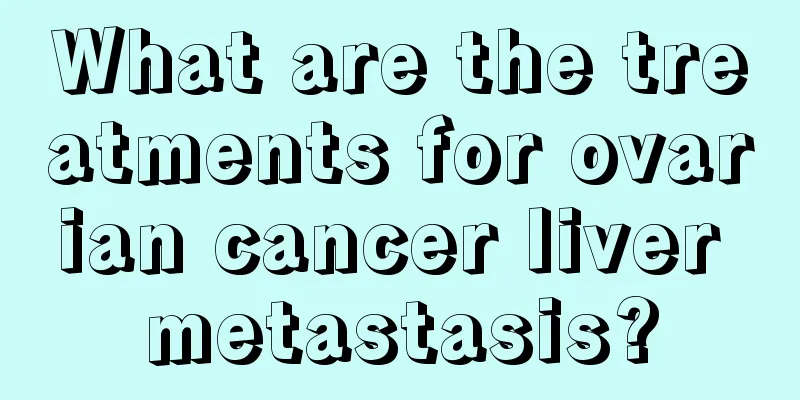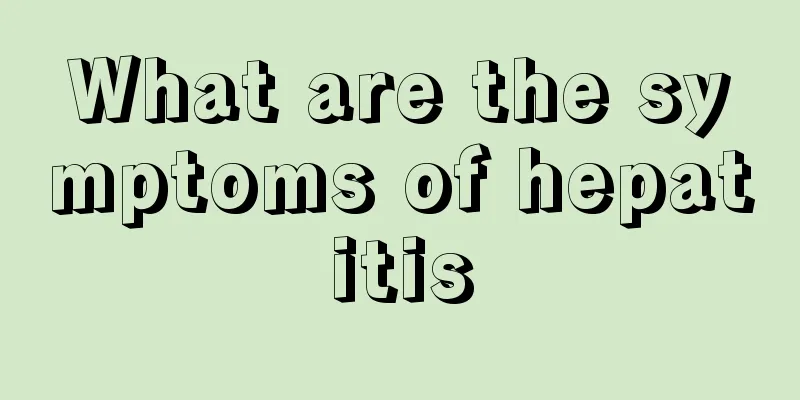What are the treatments for mitral stenosis

|
There are many types of heart disease. The mitral stenosis we are going to talk about today is also a type of heart disease. Mitral stenosis is mainly caused by rheumatic fever, and the treatment of this disease also needs to be divided into stages. When treating mitral stenosis, you also need to pay attention to personal care and diet. 1. Medication ①Prevent and treat rheumatic activities and streptococcal infections in the throat. ②Avoid strenuous activities and heavy physical labor. Data show that when the heart rate increases from 70 beats/min to 80 beats/min during activity, the atrioventricular transvalvular pressure gradient can increase by 1 times. ③ Pay attention to the combination of work and rest, and eat a light diet rich in vitamins to keep the heart function in the compensatory period for a longer period of time to delay the progression of the disease. ① Chronic pulmonary congestion stage: Get adequate rest and limit water and sodium intake. Drug treatment is mainly aimed at reducing preload. Diuretics can be given, such as hydrochlorothiazide (hydrochlorothiazide) 25-50 mg, 1-2 times/d; venodilators can be used to reduce the amount of blood returning to the heart. Nitroglycerin 10-20 mg can be added to 500 ml of liquid and slowly dripped intravenously. After the condition improves, long-acting nitrates can be taken orally, such as isosorbide mononitrate 50 mg, 1 time/d; beta-blockers can be taken orally to slow the heart rate and prolong ventricular diastole. ② Acute pulmonary edema: The basis of mitral stenosis combined with acute pulmonary edema is left atrial failure. Although its clinical manifestations are similar to left ventricular failure pulmonary edema, there are both similarities and differences in the treatment of the two. The similarities include the use of semi-recumbent position, oxygen inhalation, alternating ligation of tourniquets on the limbs, injection of morphine or pethidine, sedation, rapid diuresis, use of vasodilators and aminophylline, and removal of inducements. The difference is that when pulmonary edema is caused by mitral stenosis, digitalis should be used with caution and cannot be used as the first choice method for treating acute pulmonary edema. This is because the cardiotonic effect of digitalis can enhance the contractility of both left and right ventricles. When mitral valve stenosis occurs, the left ventricle is less filled during diastole than in normal people, and the anterior and posterior loads of the left ventricle are not large, or even smaller than in normal people. Therefore, there is no need to use digitalis to enhance its contractility. However, the application of digitalis also enhances the contractility of the right ventricle, which may increase the amount of blood ejected by the right ventricle into the pulmonary artery, leading to worsening of pulmonary edema. Digitalis can still be used in appropriate amounts in patients with mitral stenosis combined with acute pulmonary edema, but only in patients with combined rapid atrial fibrillation, obvious sinus tachycardia and supraventricular tachycardia. Its main purpose is to slow down the ventricular rate rather than increase myocardial contractility. If the ventricular rate still does not decrease significantly after the application of digitalis, 0.5-2 mg of propranolol or 2.5-5 mg of verapamil can be diluted with 20 ml of 5% glucose solution and slowly injected intravenously under ECG monitoring, which often achieves good results. In terms of vasodilators, the first choice is drugs that mainly dilate veins, such as 10-20 mg of nitroglycerin added to 500 ml of 5% glucose solution for intravenous drip to reduce the amount of blood returning to the heart and improve pulmonary congestion. If medical treatment is ineffective, institutions with the necessary conditions may perform emergency percutaneous balloon mitral valvuloplasty or surgical closed valvuloplasty to relieve valvular stenosis as soon as possible. ③ Mitral stenosis combined with massive hemoptysis: General treatment principles include close observation of the condition, prevention of suffocation, supine position, oxygen inhalation for those with dyspnea and hypoxia, and appropriate use of hemostatics such as carbachol (Anlox), ethamine (Hemostatic), vitamin K and aminocaproic acid. However, it must be pointed out that posterior pituitary hormone, which is often used in clinical practice for pulmonary hemoptysis, should not be used because it has a strong vasoconstrictor effect, which can increase blood pressure, increase pulmonary artery resistance, and increase the burden on the heart. On the contrary, vasodilators can be used to reduce pulmonary venous pressure. Nitroglycerin 0.3-0.6 mg can be taken sublingually once every 0.5-1 hour, or intravenously. In addition, powerful diuretics may be used to reduce pulmonary venous pressure. Severe hemoptysis that is unresponsive to medical treatment can be treated with emergency percutaneous balloon mitral valvuloplasty. ④ Mitral stenosis combined with thromboembolism: The formation of left atrial mural thrombus is positively correlated with the degree of left atrial enlargement and the duration of atrial fibrillation. To prevent left atrial mural thrombosis in patients with chronic atrial fibrillation, long-term administration of antiplatelet drugs is recommended, such as 0.15-0.3 g aspirin, once a day, or 0.25 g ticlopidine, twice a day. After taking it for 3 consecutive days, change to 0.25 g, once a day. After taking it for 3 consecutive months, change to aspirin for maintenance. When chronic atrial fibrillation is accompanied by fresh left atrial thrombus formation, and the valvular lesions are consistent with the characteristics of the septal type or septal thickening type, percutaneous balloon mitral valvuloplasty can be considered after 3 to 4 weeks of warfarin anticoagulation treatment. If the valvular lesion is consistent with the septal funnel type or infundibulum type, surgical mitral valvuloplasty or artificial valve replacement is suitable, and anticoagulation treatment is still required after surgery. Because atrial stunning may occur after cardioversion of atrial fibrillation, it sometimes takes 3 to 4 weeks to restore effective atrial contraction. Therefore, in order to prevent thrombus detachment, anticoagulant treatment should be continued for 3 to 4 weeks after cardioversion. When rheumatic heart disease is complicated by heart failure, anticoagulant therapy can help prevent venous thrombosis and pulmonary embolism in patients who have had one or more thromboembolic events and who have high-risk factors for thromboembolism (i.e., patients with atrial fibrillation and artificial mechanical heart valves). However, to date, there is no strong evidence that anticoagulation therapy can reduce pulmonary and systemic embolism in patients with sinus rhythm who have no history of thromboembolism. When thromboembolism occurs, if the embolic artery is large, the onset is within 12 hours, the patient's cardiac function is good, and the surgical field is accessible, arteriotomy and embolectomy can be performed; medical treatment mainly consists of anticoagulant therapy. ⑤ Mitral stenosis combined with atrial fibrillation: If it is paroxysmal atrial fibrillation, amiodarone is the first choice of drug, which can often prevent paroxysmal atrial fibrillation and maintain sinus rhythm. The dosage is 0.2g, 3 to 4 times/d. After 7 to 10 days, the dosage is gradually reduced to 0.2g, 1 time/d. The medication should be continued until after percutaneous balloon mitral valvuloplasty (PBMV) or mitral valve surgery, until the mitral valve transvalvular pressure gradient is close to normal. In case of persistent atrial fibrillation (atrial fibrillation lasting for more than 3 months), if the mechanical obstruction of mitral stenosis is not relieved, drug cardioversion or electric defibrillation should not be performed because recurrence is very likely. Since persistent atrial fibrillation can cause a decrease in cardiac output by about 30%, when rapid atrial fibrillation occurs, the ventricular rate should be quickly controlled. 0.4 mg of dactylin C (cedilanid) can be added to 20 ml of 10% glucose and slowly injected intravenously. After the ventricular rate slows down, digoxin 0.25 mg can be taken orally once a day for a long time to keep the ventricular rate at 60-80 beats/min at rest and <100 beats/min during daily activities. It is currently recommended that electrical or pharmacological cardioversion be considered for persistent atrial fibrillation that has not restored sinus rhythm after PBMV or mitral valve surgery. |
<<: What are the stage symptoms of dilated cardiomyopathy?
>>: What are the treatments for hypertrophic cardiomyopathy
Recommend
Nursing of patients with endometrial cancer after chemotherapy
Endometrial cancer is a common tumor of the femal...
Can people with prostate cancer not exercise? What causes prostate cancer?
In life, almost every man has some prostate disea...
What kinds of bacterial disinfectants are there
There are many kinds of bacterial fungicides on t...
What are the fruits that can sober you up
If you want to sober up quickly, you can eat more...
Do I need to check before having a caesarean section for my second child?
Giving birth is a very important thing in a woman...
What can I do to get rid of wrinkles around my eyes?
With the improvement of the quality of life of mo...
Simple and effective method to eliminate termites
People have always been confused about how to eli...
How to lower blood pressure_Methods to lower blood pressure
Because people's living standards are very hi...
How to treat breast cancer 2B
Breast cancer is a very common malignant tumor in...
My chin is swollen and hard several months after I had it done
In this society where appearance is everything, m...
What are the benefits of sulfur soap for washing your face?
With the development of technology, there are mor...
How to tie hair for military training
When school starts in September every year, many ...
Will frozen shoulder cause dizziness?
The problem of frozen shoulder can indeed cause d...
Can you run backwards if you have lumbar disc herniation?
Can I run backwards if I have a lumbar disc herni...
Can eating kiwi fruit prevent lung cancer? You should pay attention to these matters to prevent lung cancer
Among the occupational diseases today, the incide...









